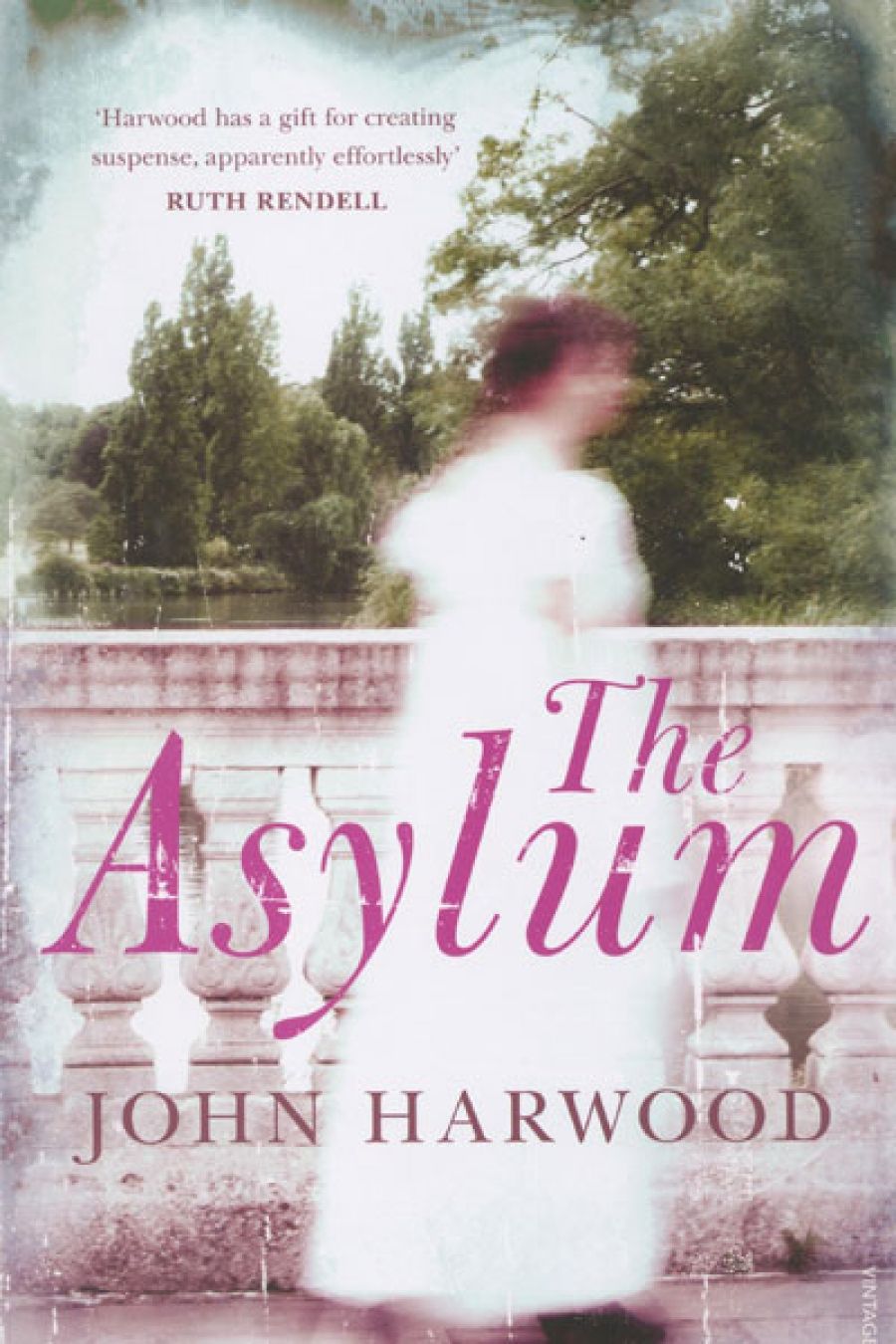
- Free Article: No
- Contents Category: Fiction
- Custom Article Title: Benjamin Chandler reviews 'The Asylum' by John Harwood
- Review Article: Yes
- Article Title: Gleeful gothic
- Online Only: No
- Custom Highlight Text:
In The Asylum, the latest dark suspense novel from John Harwood, the author manages to walk a fine line between Gothic romance and contemporary psychological thriller. Or rather, he gambols gleefully along it, delighting his reader with familiar Gothic tropes while deftly interrogating his protagonist’s sense of her own self. There are mirrors here, an insane asylum, and enough startling coincidences to make you think Harwood was actually writing this in late Victorian England, where the novel is set. There are even a dark, brooding hero and a diabolical villain, assuming they are who they appear to be. But at its heart this novel concerns one woman’s struggles with her own identity, one she is only barely aware of herself. That woman’s name is Georgina Ferrars. Or is it?
- Book 1 Title: The Asylum
- Book 1 Biblio: Vintage Australia, $32.95 pb, 257 pp
Georgina is told, on waking one day in a private insane asylum in the country, that she had admitted herself voluntarily under the name Lucy Ashton the night before. She has no memory of doing so, nor of her immediate past. It is not so much shrouded in her mind as simply gone. Earlier memories remain, and she is convinced that she is in fact Georgina Ferrars – most of the time. There is a delicious uncertainty at the heart of this novel, shared equally between the protagonist and the reader. It is a testament to Harwood’s storytelling prowess that this never frustrates his readers. Instead, it spurs them on through the many twists in his narrative. They will be convinced that Georgina is who she believes herself to be, that the woman currently living her life outside of the asylum is in fact the impostor, only to be equally certain a few pages later that the woman in the insane asylum is Lucy Ashton, and that she is fatally obsessed with the real Georgina Ferrars.
Other characters play into this ambiguity as well. Is Maynard Straker, the doctor in charge of the asylum, trying to cure Lucy of her delusion, or did he somehow lure Georgina here in order to torment her, and if so why? Is Frederic Mordaunt, heir to the grounds on which the asylum sits, Georgina’s ally, or is he yet another tool the mad doctor wields to manipulate Lucy? Why is everyone convinced that the girl living with Georgina’s uncle is actually her? Where did this doppelgänger come from and what are her motivations? And if she is the real Georgina Ferrars, then who is the woman locked away in the insane asylum?
The answers to these questions are locked inside the narrator’s mind, if she can only recover her memory. As her position shifts from volunteer patient to certified lunatic, Georgina rifles desperately through what memories remain in her efforts to find some clue that might lead to her release – or her escape. There are connections there to be made – bizarre, uncanny, and just beyond her reach – and they are immensely satisfying for the reader. A slight misstep in the revelation of the plot requires a small mental backflip on the reader’s part, but this is not enough to detract from the whole, which is otherwise gripping and well paced. The suspense, maintained throughout, pays off in the final pages, though one detail in the climax seems rather cheap.
The Asylum is, for the most part, recounted by Georgina Ferrars herself, who is one of the best unreliable narrators the genre has to offer. Halfway through the novel, the narration shifts to letters and diary entries, filling in certain gaps in Georgina’s memory and providing crucial insights into her personality, which hold secrets and developments of which Georgina is largely unaware. It is an effective use of the epistolary form that pays homage to the Gothic romances Harwood is clearly so fond of, and it shines a contemporary spotlight on traditional Gothic subtext. In essence, this is Harwood’s true talent – his ability to present period Gothic as contemporary fiction – and it is on full display in his characters, his narration, and perhaps most notably in the construction of his setting.
Special mention must be made of the titular asylum. Like all iconic Gothic settings, Tregannon House presents two façades to the reader. The first is the peaceful respite home for those suffering from mental afflictions. This incarnation offers comfortable sitting rooms and pleasant grounds, and staff who believe in gentle treatment for their patients. A woman suffering from severe delusions could not hope for a safer haven (Georgina is often reminded of, and threatened with, the alternatives). The asylum’s darker side is revealed, not through familiar tropes like hidden dungeons and secret corridors, but in the history of the family who own the property. Madness runs in the Mordaunt family, though for contemporary readers their symptoms will suggest clinical depression rather than lunacy. Their ruined ancestral home sits adjacent to the asylum; Doctor Straker has pronounced the old building off limits, claiming it as his laboratory. The perfect setting for Georgina’s plight, the asylum highlights the tension at the core of the narrative while simultaneously drawing each narrative strand together.
The Asylum is as dark and suspenseful as any good Gothic romance. John Harwood, masterfully toying with readers’ expectations, engrosses them in its mystery and gives satisfaction at pretty much every turn.


Comments powered by CComment